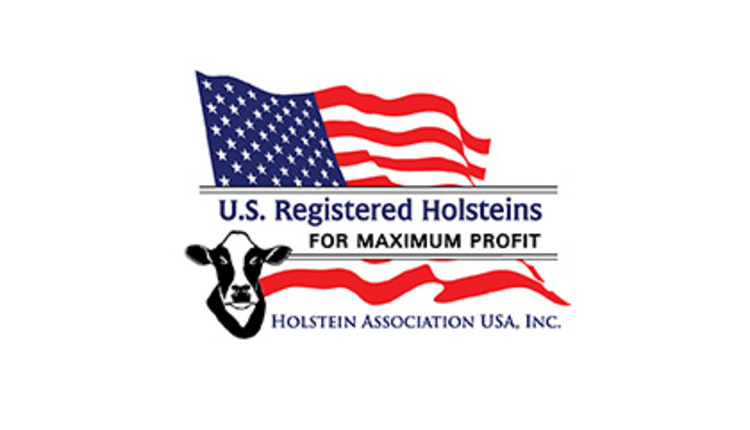
This week, the Council on Dairy Cattle Breeding (CDCB) published updated genetic evaluations for 50 traits and four selection indexes for more than 81.5 million dairy animals. During this triannual process, CDCB also reports known haplotype calls to enable producers to better manage known genetic factors.
In the December evaluation, an imputation update was performed for animals across all breeds. This periodic full-population update improves the accuracy of our genetic system overall; however, for certain groups of animals, the genomic evaluations and haplotype calls were more variable than usual. Generally, higher-profile animals, like bulls used for artificial insemination and females in breeding and marketing programs, were not at all or mildly affected by the imputation update because they have complete pedigrees recorded and were genotyped with high-density chips.
With our research partner, USDA Animal Genomics and Improvement Laboratory, CDCB first described the imputation update and its impacts in this article. Additionally, the new December evaluations include new haplotype calls for early onset muscle weakness syndrome (HMW) and updated haplotype calls for cholesterol deficiency (HCD) in Holsteins. For more on that, read “What is a haplotype call?”
What is imputation?
To understand the December change, let’s first review imputation and the role of haplotypes in modern genomic evaluations.
Imputation is a fancy word to describe how we fill in missing information at the genomic level. The filling of such gaps is first based on parent and progeny information, if available. Since an animal receives one allele from both its sire and dam and passes along that same information, we can use that knowledge to fill in some of the missing information.
Then, we use the breed population information, based on haplotypes, or “chunks” of DNA that get passed along from generation to generation across the population. These are most often groups of single-nucleotide polymorphisms (SNPs) scattered across an animal’s genome.
Haplotypes have become a valuable tool in the genomic era in the imputation process as well as for identifying specific, small areas of the genome that are linked to genetic factors that may be beneficial (such as polled or red factor) or detrimental (like causing embryo or performance loss).
The number of SNPs used to calculate a CDCB genomic evaluation is around 79,000. Those specific SNPs are not available on all the genotyping chips used over the years for various reasons. So, we perform the imputation step at CDCB to make sure all animals have genomic information on those 79,000 data points before we calculate the genomic evaluation. (If you’re curious, CDCB manages 53 SNP chips with various quantities of SNPs, ranging from about 3,000 to 777,000.)
For newly-genotyped animals, the imputations utilize the most current haplotype library, which is updated every month as part of the routine monthly genomic evaluation process. Also, animals with added information, such as those genotyped again with a higher-density chip, are freshly imputed to receive more accurate genomic evaluations.
Therefore, the imputation update is a periodic process every few years to refresh the haplotype library for all animals of all breeds. This full-population imputation update last occurred in April 2021. This update ensures all animals benefit from the latest information available regarding which SNPs are usable on individual chips. The haplotype library is not updated as a whole for all animals as that would require many days of calculations. The national cooperator database managed by CDCB has more than 8 million animal genotypes, with over 1.3 million genotypes added in the last year. New information is constantly available, and the haplotype frequencies change as the database grows.
Which animals are most affected?
With the imputation update, evaluation results for animals that have their complete pedigree recorded and were genotyped with a high-density chip are expected to remain stable. In other words, PTAs (or Predicted Transmitting Abilities) for high-profile animals like bulls marketed for A.I. and females in breeding programs would generally be unaffected. Haplotype calls may change for those animals, as they depend on haplotypes in specific regions of the genome.
A higher variability of genomic evaluations, breed base representation (BBR) values, and haplotype calls were more likely for specific subsets of the dairy population. Animals most affected were:
- Those with non-genotyped dams (fully imputed)
- Animals genotyped at low density or with the newest chips
- Animals with a partial or incomplete pedigree
- Animals with weak or no links to the U.S. reference population.
Haplotype calls for Holstein cholesterol deficiency (HCD) will likely change much more in this release compared to previous runs. This is linked to the imputation update and the availability of more than 1.3 million direct test results for cholesterol deficiency confidentially shared by Holstein Association USA for haplotype call improvement, Lastly, CDCB published a new haplotype for early onset muscle weakness (HMW), to help in the population-wide monitoring of this yet undeclared and non-lethal condition.
The bottom line
Imputation and the use of haplotypes have been a fascinating area of discovery and application over recent decades and the genomic area. Genotyping and genomic selection have resulted in significant progress in dairy cattle breeding, including incredible genetic gain, development of new traits, improved ancestry discovery, and the ability to identify and manage desirable and undesirable genetic factors. CDCB, researchers, and animal breeders continue to explore and tap into new ways genomics can be leveraged to improve the productivity, health, well-being, and sustainability of dairy cattle worldwide.








